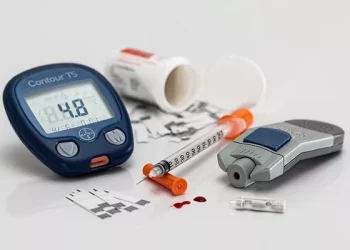Diabetes is a complex and multifaceted group of metabolic disorders characterized by elevated blood sugar levels. While all types of diabetes share a common feature of hyperglycemia, they differ in their underlying causes, pathophysiology, and treatment approaches. In this comprehensive guide, we delve into the diverse landscape of diabetes, exploring the different types, their unique characteristics, and the implications for management and care.
1. Type 1 Diabetes: An Autoimmune Disorder
Type 1 diabetes (T1D), formerly known as juvenile diabetes or insulin-dependent diabetes, is an autoimmune disorder characterized by the destruction of insulin-producing beta cells in the pancreas. This autoimmune attack is believed to result from a combination of genetic predisposition and environmental triggers, such as viral infections or dietary factors.
Individuals with T1D are unable to produce insulin, the hormone responsible for regulating blood sugar levels and facilitating the uptake of glucose into cells for energy. As a result, they require lifelong insulin therapy to survive. T1D typically presents in childhood or adolescence, although it can occur at any age.
Key Features of Type 1 Diabetes:
- Autoimmune destruction of pancreatic beta cells
- Absolute insulin deficiency
- Onset typically occurs in childhood or adolescence
- Requires lifelong insulin therapy for management
- Risk factors include genetic predisposition and environmental triggers
2. Type 2 Diabetes: A Complex Metabolic Disorder
Type 2 diabetes (T2D), the most common form of diabetes, is a complex metabolic disorder characterized by insulin resistance, impaired insulin secretion, and dysregulated glucose metabolism. Unlike T1D, which involves autoimmune destruction of beta cells, T2D is primarily driven by lifestyle factors, such as obesity, sedentary behavior, and poor dietary habits.
In T2D, the body’s cells become resistant to the action of insulin, leading to elevated blood sugar levels. Over time, the pancreas may also fail to produce enough insulin to overcome insulin resistance, further exacerbating hyperglycemia. While T2D typically develops in adulthood, it is increasingly being diagnosed in children and adolescents due to rising obesity rates.
Key Features of Type 2 Diabetes:
- Insulin resistance and impaired insulin secretion
- Often associated with obesity and sedentary lifestyle
- Onset typically occurs in adulthood, but increasingly diagnosed in children and adolescents
- Treatment may include lifestyle modifications, oral medications, and/or insulin therapy
3. Gestational Diabetes: A Temporary Condition
Gestational diabetes mellitus (GDM) is a form of diabetes that develops during pregnancy and typically resolves after childbirth. It is characterized by elevated blood sugar levels that occur for the first time during pregnancy, often as a result of hormonal changes and insulin resistance associated with pregnancy.
While GDM does not always cause symptoms, it can increase the risk of complications for both the mother and baby if not properly managed. Women with GDM are at higher risk of developing type 2 diabetes later in life, highlighting the importance of postpartum screening and lifestyle modifications to reduce future risk.
Key Features of Gestational Diabetes:
- Develops during pregnancy and typically resolves after childbirth
- Associated with hormonal changes and insulin resistance
- Increases risk of complications for mother and baby
- Women with GDM are at higher risk of developing type 2 diabetes later in life
4. Monogenic Diabetes: Rare Genetic Disorders
Monogenic diabetes refers to a group of rare genetic disorders caused by mutations in a single gene that affects insulin production and secretion. Unlike T1D and T2D, which are polygenic disorders influenced by multiple genetic and environmental factors, monogenic diabetes results from a specific genetic mutation inherited from one or both parents.
There are two main subtypes of monogenic diabetes: maturity-onset diabetes of the young (MODY) and neonatal diabetes mellitus (NDM). MODY typically presents in adolescence or early adulthood and is characterized by impaired insulin secretion due to mutations in genes involved in beta-cell function. NDM, on the other hand, presents in the first six months of life and is caused by mutations in genes essential for insulin production.
Key Features of Monogenic Diabetes:
- Rare genetic disorders caused by mutations in a single gene
- Two main subtypes: maturity-onset diabetes of the young (MODY) and neonatal diabetes mellitus (NDM)
- Often diagnosed in childhood or adolescence (MODY) or infancy (NDM)
- Treatment may vary depending on the specific genetic mutation and subtype
5. Other Types of Diabetes: Secondary and Miscellaneous
In addition to the main types of diabetes mentioned above, there are several other less common forms of the condition, including:
- Secondary Diabetes: Diabetes that develops as a result of another underlying medical condition or factor, such as pancreatitis, cystic fibrosis, or certain medications.
- Cystic Fibrosis-Related Diabetes (CFRD): A type of secondary diabetes that occurs in individuals with cystic fibrosis, a genetic disorder that affects the lungs and digestive system.
- Steroid-Induced Diabetes: Diabetes that develops as a side effect of long-term use of glucocorticoid medications, such as prednisone, which can cause insulin resistance and impaired glucose metabolism.
- Chemically Induced Diabetes: Diabetes that occurs as a result of exposure to certain chemicals or toxins that damage the pancreas or impair insulin secretion, such as in cases of pancreatic cancer or poisoning.
Conclusion: Navigating the Complexities of Diabetes
Diabetes is a diverse and multifaceted group of metabolic disorders characterized by elevated blood sugar levels. While type 1 and type 2 diabetes are the most well-known forms of the condition, there are several other types, each with its own unique characteristics, underlying causes, and implications for management and care.
By understanding the different types of diabetes and their distinct features, healthcare providers can tailor treatment approaches to meet the individual needs of patients and optimize outcomes. Additionally, raising awareness of the various types of diabetes can help dispel misconceptions, reduce stigma, and promote early detection and intervention.
Ultimately, by working together to advance research, improve education, and enhance access to care, we can better support individuals living with diabetes and empower them to lead healthy, fulfilling lives. Whether it’s type 1, type 2, gestational, monogenic, or another form of diabetes, every individual’s journey is unique, and every step forward is a testament to resilience, courage, and hope.


























